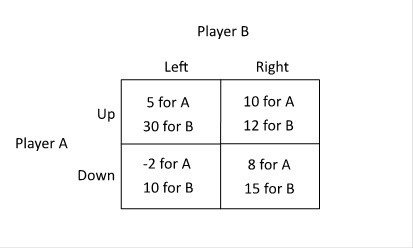In the United States from 1950 to 2000, it was most likely that an unemployed person would
A. be re-employed in less than 5 weeks.
B. be re-employed in 5 to 14 weeks.
C. be re-employed in 14 to 26 weeks.
D. exit the labor force.
E. be re-employed in more than 26 weeks.
Answer: A
You might also like to view...
Refer to the figure below. What is the Nash equilibrium of this game? 
A. A chooses Up, B chooses Right B. A chooses Up, B chooses Left C. A chooses Down, B chooses Left D. A chooses Down, B chooses Right
The proposition that the amount of goods and services produced in an economy in the long run is not affected by the price level is known as the ________
A) neutrality of money B) classical dichotomy C) quantity theory of money D) Fisher effect E) none of the above
Only two states do not have state personal income taxes
a. True b. False
If rapid population growth reduces the amount of capital per worker, thereby lowering labor productivity, it is referred to as:
a. age dependency. b. capital budgeting. c. investment diversion. d. capital disinvestment. e. capital shallowing.